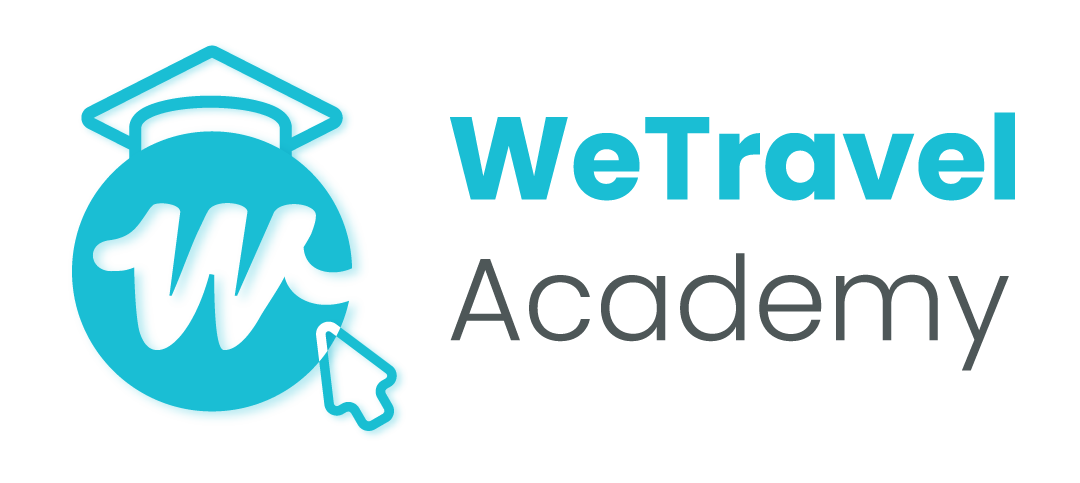The Rise Of Mastermind Retreats: Bonding, Collaboration, Growth, and Profit - with Victoria Sas
In this Facebook Live event, Keri is joined by Victoria Sas, who talks about the rise of mastermind retreats, bonding, collaboration, growth, and profit.
Hosting mastermind retreats offer retreat leaders the opportunity to connect their participants in an exciting, innovative space where everyone can walk away with new skills and knowledge.
Over time, mastermind retreats can help you grow professionally and personally while building a sustainable, profitable business.
About Our Speaker
Victoria is the founder of RetreatProfits, whose mission is to help entrepreneurs scale and grow their business by incorporating luxury mastermind retreats.
She brings a decade of experience in financial services to the table, having worked for investment banks in NYC, the most recent being Goldman Sachs.
Victoria shares her passion for travel with her husband. Both are digital nomads who have spent time traveling and living across the globe.
Wonder What's Missing From Your Wellness Business' Marketing Strategy?
The Rise Of Mastermind Retreats – Bonding Collaboration, Growth, and Profit
The Three Pillars Of A Mastermind Retreat
Keri: Starting with the word mastermind: RetreatProfits focuses on helping entrepreneurs plan and execute mastermind retreats. We hear that word used frequently in the business world.
So, I'm curious, what does it mean to you, and why did you start the business on that?
Victoria: There are three key pillars when I think of what a mastermind retreat is.
The first is what I like to call dynamic participation.
We do away with the model of one teacher and many students sitting in listening.
Instead, there is a group of people who come together to learn a given skill set. And the goal is that everybody has something of value to add.
The beauty of the mastermind retreat is that everyone can walk away with lasting friendships, lasting bonds, and resources from each individual who participated in the retreat.
Pillar two focuses on a tangible or actionable skill set.
Going into a mastermind retreat, individuals set themselves goals, and there's a goal that the retreat leader puts out there. This makes the retreat heavily content-focused.
For me, this is what separates a mastermind retreat from all other retreats; there's a heavy emphasis on content versus just experience.
You have the experiences too, and you're doing everything else you would in a regular retreat. But, you're focusing on the content, on walking away with a tangible set of knowledge that you've pre-planned ahead of time.

Pillar three is a little bit technical.
When we think of the client journey for a mastermind retreat, chances are it’s not the participants’ first time learning from the retreat leader.
Maybe they have purchased an E-book, read content online, joined a training, or a webinar. Now, the reason why they're attending the mastermind retreat is to get a more immersive experience.
And this is the biggest differentiating factor – that is, upsells.
Somebody comes to you and joins your mastermind retreat. They're learning from you, and during the retreat, this can be a stepping stone. For example, you can offer additional mentorship to your community after the fact.
It's not this one-and-done thing. It's a part of the bigger client journey.
Key Benefits Of Hosting and Offering A Mastermind Retreat
Keri: That makes sense. What would you say are the key benefits of hosting and offering a mastermind retreat for anyone who hasn’t done one before or is thinking about it?
Victoria: The first is client transformation.
A person joins a mastermind retreat because it offers a more intimate and personal setting for growth and development.
The next and one of the most important benefits is brand loyalty.
The beauty of mastermind retreats is that they give you this intimate personal connection with your community, where you can meet with them to explain the ethos of your brand.
What do you stand for?
What are your principles?
Essentially, you can walk away with lifetime clients. That’s because they can feel like they’re really part of your brand and connect with you as the leader. So, they’re going to want to be with you on the entire journey together.

The next piece is the opportunity for upsells and sales.
Generally speaking, retreat leasers might think they can make money just from ticket sales. But if we think of the bigger client journey, you can offer additional mentorship we just spoke about. And you can do that on the spot as individuals are attending your event.
The last piece is around content and social proof.
Say you hire a videographer who's going to record the retreat content for you. Now you've got an evergreen product.
You can share that with your community that didn't attend the event.
You can make a training out of it.
Or maybe you just want to use it for self-development.
Then you also have the social proof.
People join your retreat and have a blast. What is the next thing they're going to do?
They're going to write on Instagram or start putting posts on Facebook. They’re going to talk to their family members and their friends.
As business leaders, this is the main thing that we're out for.
We're trying to get true, honest feedback through word of mouth. There’s nothing more valuable than seeing your community happy and enjoying themselves. And while they’re doing it, they're also tagging your business.
Start With The Foundations
Keri: Big question: what sets a profitable retreat apart from one that isn't?

Victoria: I would say that you have to focus on the foundations first.
Figure out what your retreat budget is.
Create a retreat theme. You might have a cool venue in Costa Rica, but it's tough marketing to people if they don't understand why they're coming to visit you.
And then, most importantly, you have to validate the idea. You may think that you're creating something incredible, but maybe that's not what your ideal client wants today.
So, you have to ask all the right questions before jumping in to do the fun things like book the venue and plan the activities.
Common Financial Mistakes That Retreat Planners Make
Keri: From a financial perspective, are there any common pitfalls that you see retreat leaders fall into when they are planning their retreats?
Victoria: I've alluded to the first one, which is around validation.
Putting out a survey is super, super important.
You could go ahead and price the retreat you have in mind off the top of your head. And you may get lucky with this ideal number and have people buy into it.
But I would say nine times out of 10, you're either overpricing or underpricing your retreat.
If you're underpricing, you're missing out. And if you're overpricing, you're not going to fill the seats.

Pitfall two comes up all the time. You have incredible retreat leaders who do not pay themselves for their time.
What I always have my clients think about is, if they were to meet with somebody for an hour and give them a one-on-one consultation, how much would they charge them?
Take that and extrapolate it into a three-day or a seven-day event? You're spending eight to 10 hours a day giving your time, energy, and passion to what you’re doing. But then you're charging $0?
We're not just talking about numbers. To help your community, you need to have a sustainable business.
Then this last one is maybe not a pitfall, but it goes back to brand loyalty.
Let's say you've planned this incredible retreat. You've filled 75% spots, and there's a week left before the trip.
Your gut instinct says, ‘I just want to break even. I'm going to cut the price down to let me fill those last seats.’
You charged all the individuals before this $4,000, and your breakeven is $2,000. But what happens to the people who paid $4,000? Now see on Instagram that you're advertising the last seats for $2,000?
They're unhappy.
There are other ways to address these types of situations. For example, you can offer a ‘buy and bring a friend’ discount.
You can take that same incentive and offer it to the rest of the group that's already joined.
Create A Profitable Retreat From The Ground Up

Keri: We’ve spoken about surveying your clients first and figuring out your profit margins. Don't over under charge, and approach last-minute breakeven carefully. Do you have any other strategies to share with the community for planning a profitable retreat?
Victoria: I would say you've highlighted the key items, so I'll focus this on the mindset piece.
When we talk about mastermind retreats, and in general, when we talk about a successful business, it's not a one-and-done event.
You can do that. But profits really come as you scale.
The first time around, you have to focus on the foundations.
You create a retreat sales page. You put together your first email marketing campaign, maybe even your first social media campaign.
All of this takes a lot of time, and time equals money. You've invested all this time for just one retreat, but the scale isn't there.
If you can build these foundational items out and then use them over and over and over again, that's where we get what we call economies of scale happening.
You might go in for one retreat and think it’s going to make you thousands of dollars. But really, the goal is to create a sustainable business where a retreat is part of your revenue line items consistently.
You build out the foundation that will help you get there.

And the last piece is the upsells.
You have a group of people who traveled to be with you, to learn from you, and they're physically sitting in front of you.
You want to ask them questions. You want to know what additional hand-holding they need; what additional mentorship they need.
It’s hard to do this via a computer screen.
It's a lot easier to do when you're actually bonding with somebody and learning what they need and building something around them.
Marketing Tactics For Filling Retreats
Keri: You already touched on the buy and bring a friend discount. Are there any other key marketing tactics that mastermind retreat leaders could use to help fill their retreats?
Victoria: My favorite is called the waitlist strategy. This one makes me tick because it brings home the point that you can never start marketing too early.
The waitlist strategy begins when you really only have a few ideas and nothing even booked.
Let's say you know where and when it will happen, and you know your retreat theme.
You can start sharing the buzz with your inner circle or your group on social media. See if people are interested.
If they do show interest, you can give them the opportunity to opt into your email list for an incentive.
And that incentive could be, ‘hey; you're going to be the first ones to find out when registration opens.’
Or maybe it's going to be that ‘early bird pricing will be available to you before anyone else.
The key here is that you have nothing to lose. You haven't booked anything yet; you don't even have a sales page up. But you can already start marketing because you're growing your list.

Another one that I can share is what I call the hotlist strategy.
I have my clients identify, let's say, 15 to 20 individuals off the top of their head today who they think would be an ideal client for their retreat. Write them down.
They can be previous students, friends, whoever you think will benefit from attending this retreat.
From there, you're going to build a separate, more personalized marketing campaign around these individuals.
You're going to reach out to them on the platform where you usually talk to them. And you're going to explain to them that they are part of the inner circle.
This is a select group you thought about who you want to personally invite to your retreat.
Let's say they're interested. You can start going in and sharing information on the retreat, giving them whatever they need to overcome to sign up.
I will summarize with a more general principle, which is the importance of email marketing.
If you have an individual's email, you can then reach out to them multiple times, answering the questions that they may have. You can go out and build an email sequence that helps them overcome some of those obstacles they meet before signing up.
I'm a huge fan of email marketing, and I advocate it for all of my clients looking to fill retreats.
An Offer From RetreatProfits For WeTravel’s Community
A huge thank you to Victoria for her valuable insights on bonding, collaboration, growth, and profit through mastermind retreats.
RetreatProfits has an offer for this community of listeners.
You can get a 4-month mastermind retreat planning timeline filled with pro tips and checklists alongside a free 30-minute retreat planning evaluation. Here, they will help you with any retreat pricing, sales, marketing, or general planning questions you may have!
You can book through the links below, on the RetreatProfits website, or Instagram bio.
Free 4 Month Mastermind Retreat Planning Toolkit - https://view.flodesk.com/pages/60fda14393887a60e090aeec
Free 30 Minute Retreat Planning Evaluation (mention WeTravel in comments when booking) - https://hello.dubsado.com/public/appointment-scheduler/60f357529792749cefbce8c3/schedule
How To Reach RetreatProfits
Instagram – RetreatProfits https://www.instagram.com/retreatprofits/
Website - www.retreatprofits.com
New resources, straight to your inbox
We’re committed to your privacy. WeTravel uses the information you provide to us to contact you about our relevant content, products, and services. You may unsubscribe at any time.





